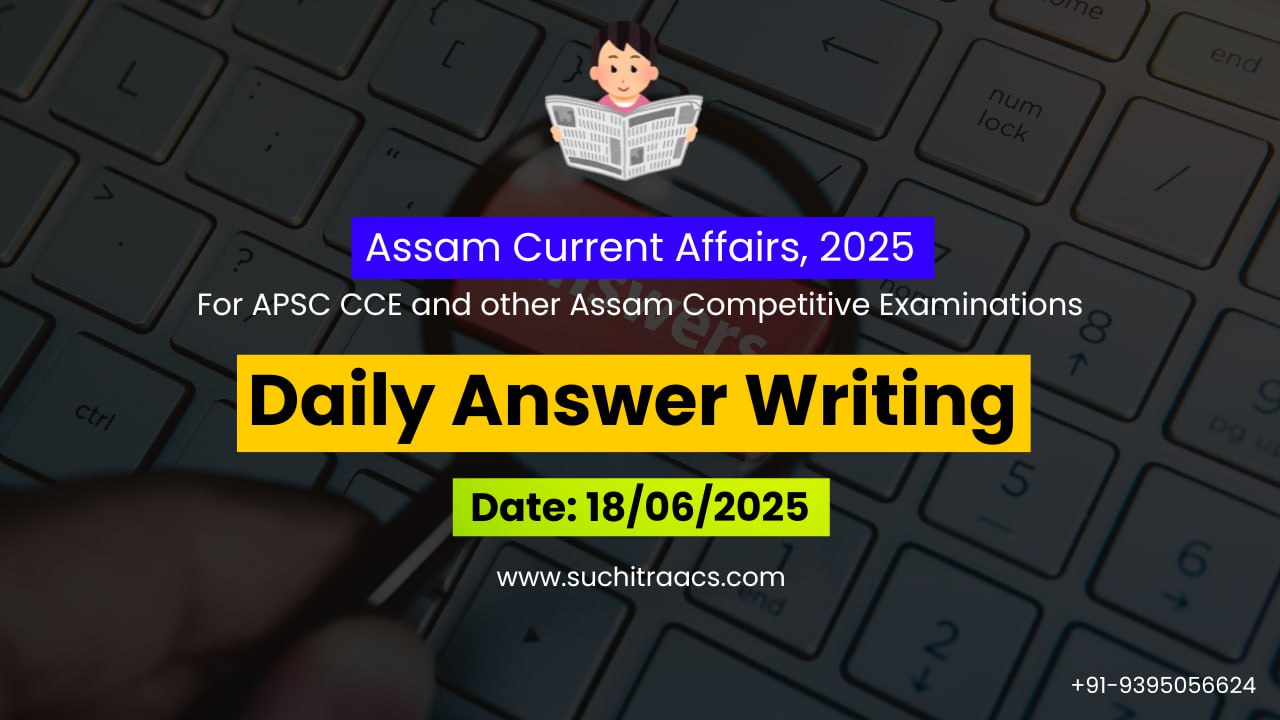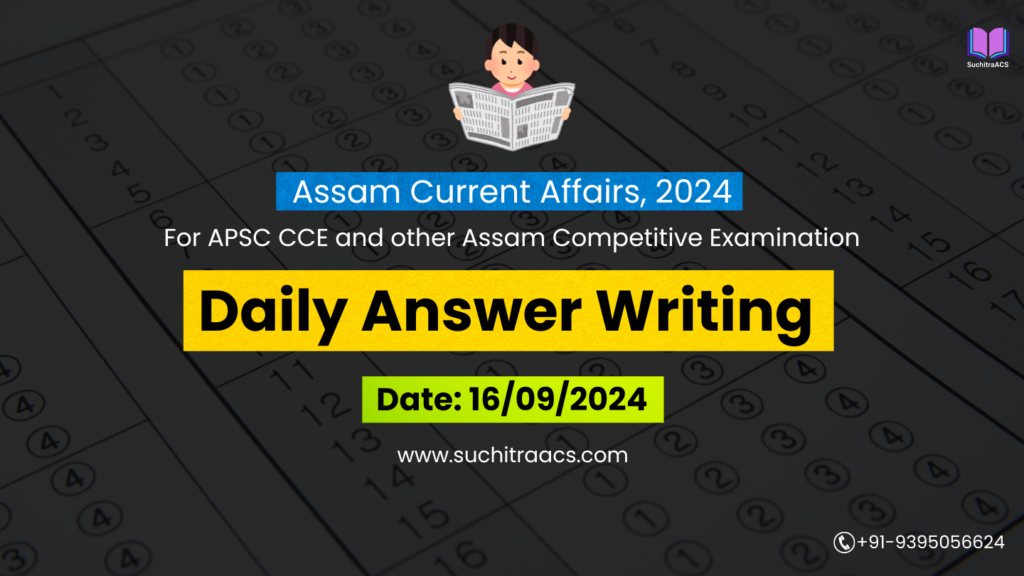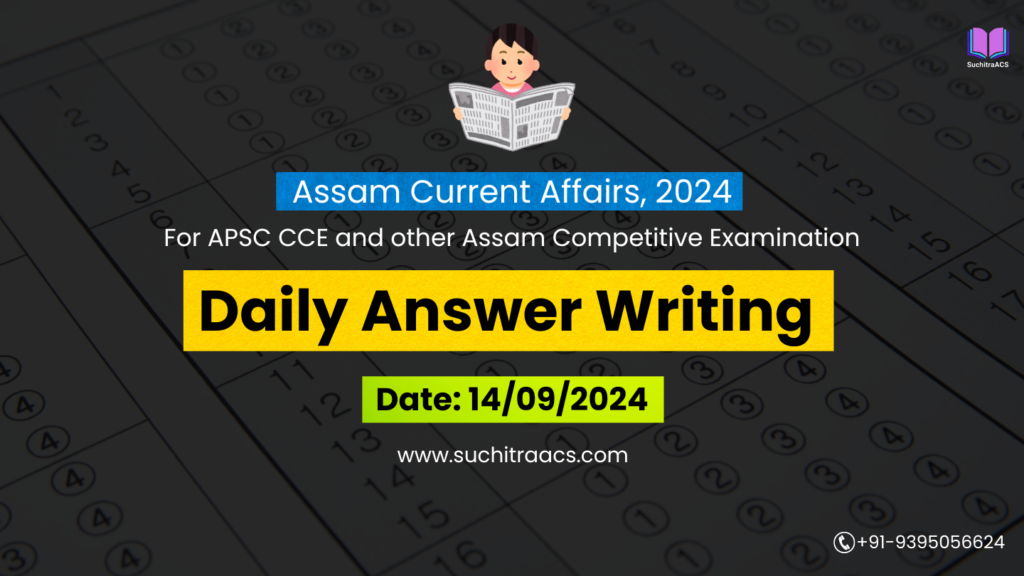APSC Answer Writing (Daily) based on Assam Tribune – 19/06/2025
For APSC CCE and other Assam Competitive examinations aspirants, practicing Daily Answer Writing is vital. This blog covers the most important Main question and its model Answer from the Assam Tribune today (19-06-2025).
📝 Mains Question:
Q. Discuss the constitutional, political, and administrative challenges in the implementation of Clause 6 of the Assam Accord. Suggest a balanced roadmap to address concerns of identity, inclusivity, and federal cooperation.
📘 Model Answer
Introduction
The Assam Accord, signed in 1985 between the Government of India, AASU, and AAGSP, sought to resolve the long-standing agitation against illegal immigration. Clause 6 of the Accord promises constitutional, legislative, and administrative safeguards to protect the cultural, linguistic, and social identity of Assamese people. Despite decades passing, its implementation remains incomplete, largely due to definitional ambiguities and political sensitivities.
Constitutional Significance of Clause 6
- Article 29 & 30: Protects minority cultural and linguistic identities
- Sixth Schedule & 371B: Offers a template for regional autonomy
- Clause 6 is expected to enhance cultural federalism, not just administrative protection
Challenges in Implementation
| Category | Challenges |
| Legal/Definitional | Lack of consensus on who qualifies as “Assamese” – pre-1951 settlers? Post-1971? |
| Political Sensitivity | Balancing rights of ethnic Assamese with those of tribal communities and post-1971 migrants |
| Administrative Coordination | Disagreement between Centre and State on report timelines and implementation modalities |
| Overlapping Processes | Tension between NRC outcomes and Clause 6 implementation |
| Trust Deficit | Delays in adopting Biplab Sarma Committee’s 39 recommendations have reduced public faith |
Justice Biplab Sarma Committee (2020) – Key Recommendations
- Reservation for Assamese people in Assembly seats and government jobs
- Regulation of land rights, trade licenses, and cultural institutions
- Constitutional amendment to define “Assamese people”
- Strengthening of indigenous language and cultural promotion bodies
Balancing Identity with Inclusivity
| Stakeholder | Concern |
| Indigenous Assamese | Fear of cultural extinction due to demographic changes |
| Tribal Communities | Want parallel safeguards without being subsumed |
| Bengali-origin Citizens | Risk exclusion from identity-based benefits |
| Civil Society & Students | Demand transparent and timely implementation |
Way Forward: A Balanced Roadmap
| Strategic Pillar | Actionable Suggestions |
| Legal Clarity | Define “Assamese people” through public consultation and SC vetting |
| Stakeholder Dialogue | Form multi-ethnic consultation group including AASU, tribal councils |
| Legislative Action | Enact a new State Act with constitutional backing for protections |
| NRC Review Linkage | Synchronise Clause 6 implementation with NRC appeal framework |
| Cultural Investment | Fund Assamese-medium schools, literature, and institutions under cultural rights |
Conclusion
Clause 6 is more than a policy—it is a promise of cultural justice. Its implementation must not exclude or alienate communities but rather foster a federal and inclusive Assamese identity. With political will, transparent processes, and community consensus, Assam can honour its past while securing a united future.
✨ Looking for top-quality APSC Mains Guidance with Personalised Mentor?

🔔 Join Our WhatsApp Study Group!
For exclusive access to premium quality content, including study materials, current affairs, MCQs, and model answers for APSC CCE and other Assam competitive exams.
Click here to join: SuchitraACS Study WhatsApp Group
📚 Want to know more about SuchitraACS’s most affordable courses?
Click here to know more: SuchitraACS Courses for APSC CCE and Assam Competitive Examinations




